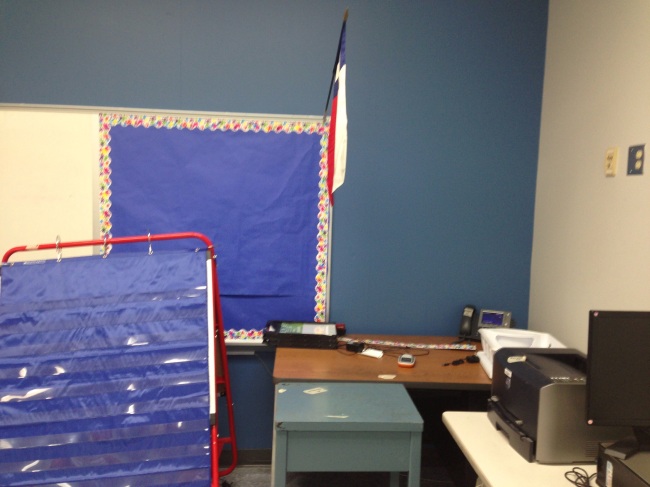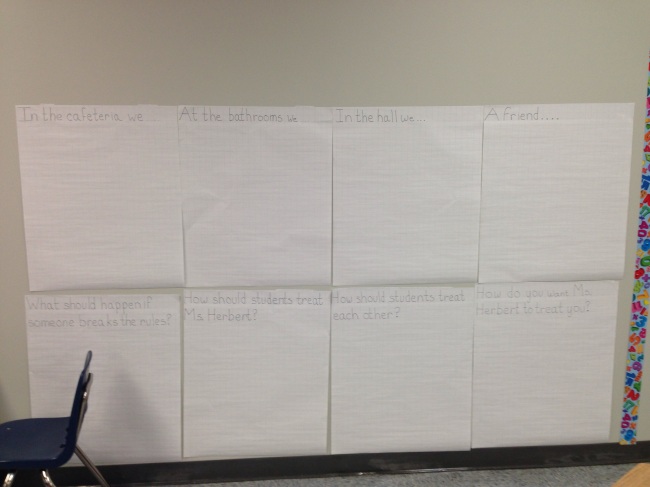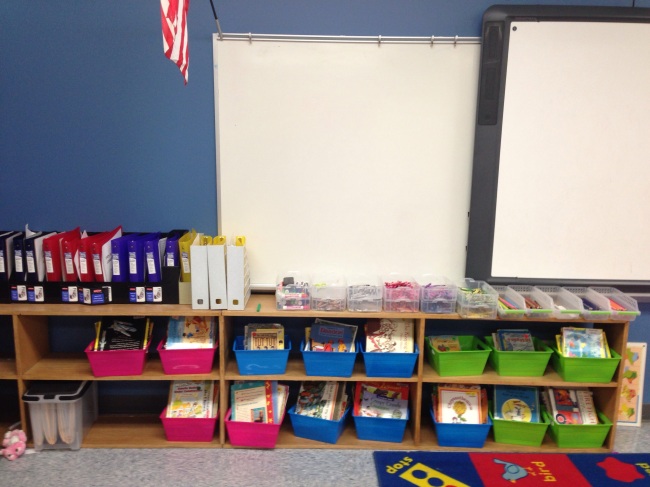An instructional Technology Specialist from our district tweeted here, asking how much we agreed with the post 10 Things in School that should be obsolete. I couldn’t just respond in a tweet.
1. Computer Labs – I agree instead of upgrading labs we should be switching to laptops, tablets, and other portable technology. I think our district is doing a good job with this. 
2. Learning in prescribed spaces. Agreed. I like taking the kids out to our garden to work when possible. We are required to be able to see kids at all times. So I can’t have kids in the pod hallway unless I’m standing where I can see the room and the hall.

3. TEACHER-CENTERED CLASSROOM – Agreed. I’m playing around with different classroom set ups for my room. I’ve pretty much decided to set up the desks so they are NOT centered on the Promethean board. I want to use the Daily 5 method. Teacher centered lessons are only 5 to 10 minutes at a time. Having the kids on the carpet, will help me keep from falling into old habits.
4. ISOLATED CLASSROOMS – Disagree with part of this. Yes teachers need to collaborate but the kids come first. My school was built open concept in 1966. It was only a few years ago that we got our walls and doors. Before that the pods were unbearably noisy at times. Kids with ADHD, on the Autism Spectrum, and with various LD’s had a very hard time concentrating. Especially when one of my neighbors was a Spanish BIL teacher. Somehow it was harder to tune out the Spanish than English, maybe her voice just carried more. The kids simply could not focus. I remember a kid with ADHD telling me – Ms. Herbert my brain can’t figure out if it is supposed to be listening to you or Mrs. D. I know I’m supposed to listen to you but my brain keeps switching back and forth. I have LD’s, and have experienced the same thing. One day last year, a tutor was working with kids in the hall. My door was open. I was supposed to be typing a comment from one of the students into a document, instead I typed what the tutor was saying. Her voice just over loaded my brain. (If I had been handwriting dollars to donuts I would have written the words in mirror image there were just to many distractions)
There are other ways for a teacher to connect with other teachers. I’ve been involved with online teaching community since the only options were BB and listservs. Now my district had a hash tag and I get tons of good ideas just following that twitter feed. If I need more information I tweet back or sometimes e-mail them. Teachers are welcome in my room at any time. Just please close the door behind you to keep the noise level down.
5. Departmental Organization. Yes teachers need to see the connections, so we can help our students build links between different types of knowledge.
6. School corridors – We have breeze ways between the pods – every pod opens into a central garden. The halls in our pods tend to be used as a 5th classroom with various aids, tutors, and specialists. Only the newest wing has a real corridor – and there are usually groups of kids with an adult working there.
7. Traditional Libraries – Agreed Our campus is heading that direction, but having growing pains as we figure it out. 
8. Dark indoor gyms – Why not have PE outside most of the time. Kids need sunshine and fresh air. They shouldn’t be fussing that they NEEEEEED their jacket because the gym is cold.
9. INSTITUTIONAL FOOD SERVICE. Lets make the food better first. Hardly any fruit or veg (I don’t care what congress says ketchup and pizza sauce are NOT vegetables), frozen fried junk, pink slime. I haven’t eaten the school lunches in years – but when I did I was often sick for days after because of the low quality. For some of my kids this and 2 bagged lunches over the weekend from Lunches of Love are the only food they get. We have to make it better. If you walk through our cafeteria it tends to be being used all the time. 7 – 7:45 breakfast, 8 – 10 small groups, tutoring, PT and OT sessions, mentors with kids. 10 – 1 Lunch 1 – 2:30 small groups, tutoring, PT and OT sessions, mentors with kids. After school various clubs.
10 Large bathrooms – in absolute and complete agreement. The school I student taught in had 2 restrooms in EACH classroom. I believe the plumbing was part of a WPA project. It was fantastic. You never had to interrupt learning for a group bathroom break. Especially good if you were in semi lockdown. Several times last year we were in semi lock down due to tornadoes/hail/lightening. Our kids couldn’t go to our large bathrooms because they are outside and the set nearest my room were flooded with 3 – 5 inches of water. (On those days what corridors we have and the cafeteria were filled with classes from the portables.)





















Linoit
http://linoit.com
Last year I used Linoit with my 2nd graders. It was very easy and they loved it. I started by creating an account at http://linoit.com Then I downloaded the app to my class Ipads and set up the account on each ipad.
I would give them a topic that we were going to study. The students in their groups would create sticky notes about the topic. The kids loved how they would type something in on their ipads and it would appear on the website displayed on the board. My tables were assigned colors and would use their color on their sticky notes.
Sometimes I let them go on for several minutes creating a huge number of stickies. I would use this as a parking lot type board, making sure to answer their questions as we explored the topic. Other times I would sort them into different thinking maps as we went. In that case they would give me their answer verbally and get permission to put it up.
I haven’t used Linoit yet this year, yet. I’m glad a friend e-mailed me asking me to do a post about using Linoit. I think we will use it next week.
Category:
education
1 Comment
Tagged with: